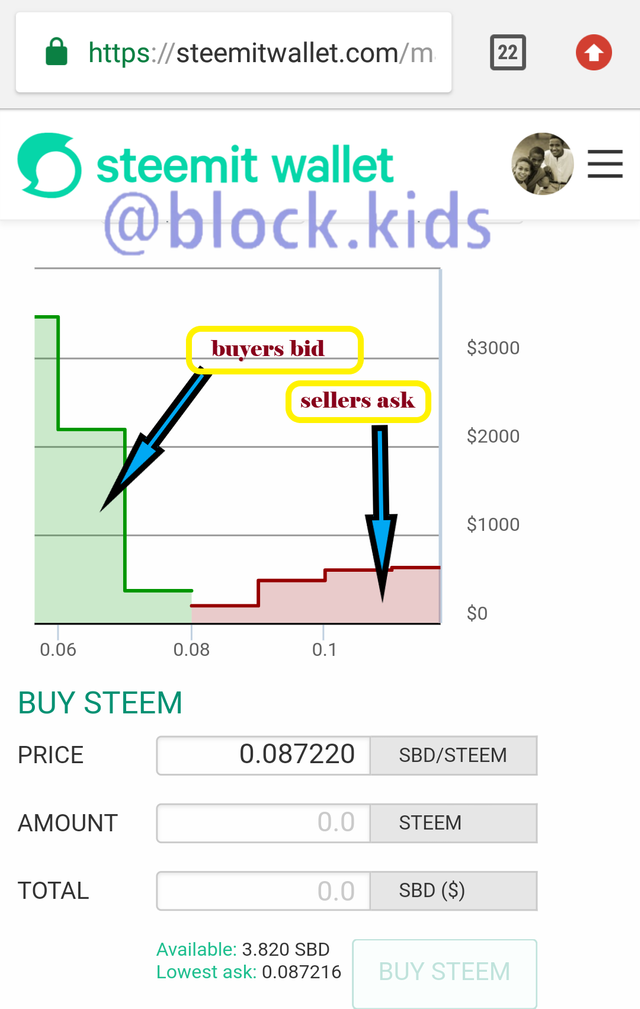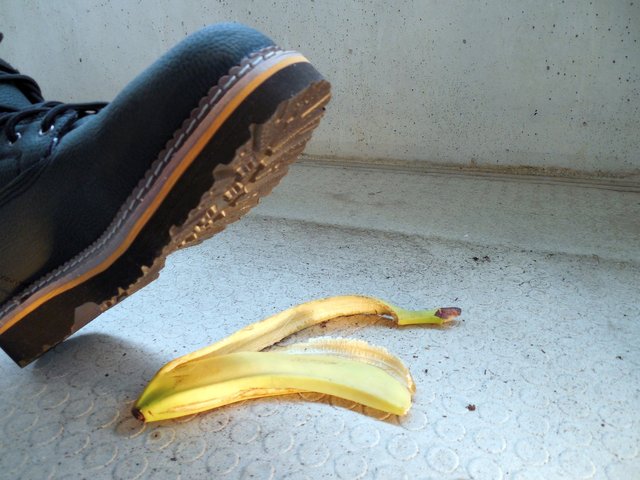Crypto Academy / Season 4 / Week 1 - Homework Post for Professor @awesononso - Topic: The Bid-Ask Spread

Hello, everyone!
I am so glad to be back, writing once again on the crypto academy community is such a great feeling. This is the fourth season and it promises to be more engaging than season three which ended successfully on a high note.
This week's topic "The Bid-Ask Spread" particularly caught my interest because as a beginner I never fully understood the concept of trading volume an liquidity, and my ignorance had cost me to incur a lot of losses when I traded my crypto assets. But thanks to Professor awenonso’s lecture post, even dummies would learn not to make the mistakes I made.
Without wasting much time, I will be responding to the questions asked in professor awenonso's lecture post.

Q1. Properly explain the Bid-Ask Spread.

The Bid-Ask Spread is something we experience in our everyday lives. It can simply be referred to as the difference between the Bid and the Ask price of a commodity. In order to get a full understanding of the bid-ask spread, we have to first understand the meaning of a bid price and an ask price.
Let us consider a scenario where you desire and intend to purchase a commodity, you would normally have a maximum amount of money which you will be willing to spend to buy that commodity. This price in which you are willing to purchase that commodity can be called your bid price as a buyer. However, even before you came to the market the trader who is to sell the commodity has already pre-determined a minimum price at which the commodity would be sold at and this minimum price can be best described as the Ask-price.
Therefore, the Bid-Ask Spread is just difference between the Bid and the Ask price of a commodity.
This is represented mathematically as;
Bid-Ask Spread = Ask price - Bid price
The Bid-Ask price spread can also be expressed in percentage as follows;
%Spread = (Spread/Ask Price) x 100
The screenshot below shows the buyers bid price area and the sellers ask price area.

source : Screenshot from my device

Q2.Why is the Bid-Ask Spread important in a market?

The Bid-Ask Spread is a very important tool used to make very sensitive decision when in the market. This is because the bid-ask spread is the key in buying a security for the best possible price and more importantly is the key to determining the liquidity and trading volume of a market.
Liquidity, is simply referred to as the ease in which assets, securities or commodities can be traded in the market. It always more profitable to trade in a liquid market rather than in one which is not liquid.
However, Trading volume is a measure of how much of a given assets, security or commodity has been traded within period of time.
In a liquid market where trade is executed easily, the bid price is usually close to the ask price. Hence, the Bid-Ask Spread (difference between both prices) would be small.
Therefore, a small Bid-Ask Spread means the market is liquid and so we expect that the trading volume would be However, a greater Bid-Ask Spread would mean that the market is illiquid and so the trading volume would be low.

Q3. If Crypto X has a bid price of $5 and an ask price of $5.20,
a.) Calculate the Bid-Ask spread.
b.) Calculate the Bid-Ask spread in percentage.

Solution
a). The Bid Price = $5
The Ask Price = $5.20
Bid-Ask Spread = Ask price - Bid price
= $5 - $5.20 = $0.2.
b). %Spread = (Spread/Ask price) x 100
= (0.2/5.2) x 100
= 0.0385(3 s.f) x 100
= 38.5%.

Q4. If Crypto Y has a bid price of $8.40 and an ask price of $8.80,
a.) Calculate the Bid-Ask spread.
b.) Calculate the Bid-Ask spread in percentage.

Solution
a). The Bid Price = $8.40
The Ask Price = $8.80
Bid-Ask Spread = Ask price - Bid price
= $8.40 -$8.80 = $0.04.
b). %Spread = (Spread/Ask price) x 100
= (0.4/$8.80) x 100
= 0.0455 (3 s.f) x 100
= 45.5%.

Q5. In one statement, which of the assets above has the higher liquidity and why?

Crypto X has a higher liquidity than Crypto Y. This is so because the Bid-Ask Spread of Crypto X is smaller than that of Crypto Y. The smaller the value of the Bid-Ask Spread the higher the liquidity.

Q6. Explain Slippage.


source : Pixabay
Whenever traders place a market order for either the purpose of buying or selling an asset there is a little waiting period between when the order is placed or when it is executed. During, this period the price of this asset can change (as experienced with Cryptocurrencies due to its volatility) from what it was at the time the market order was initiated and therefore executed on a different price. When this kind of situation occurs it is safe to say that slippage has occurred.
Therefore, slippage can simply be defined as the difference between the expected price of a trade and the price at which it was executed.

Q7. Explain Positive Slippage and Negative slippage with price illustrations for each.

Slippage occurs in various ways however there are two major types of slippage.

(1) Positive Slippage: A positive slippage occurs when a market order is executed at a price which will allow the trader make more profit. For a sell order, a positive slippage will happen only when an order is executed at a higher price than initially intended. While for a buy order, a positive slippage will only happen when an order is executed at a lower price than initially intended.
Let us consider a scenario where a trade was placed for Steem dollars (SBD) to be bought at $8 and instead the trade was executed at $7, the trader will experience a Positive slippage of;
$8 - $7= $1.
On the other hand. , if a trade was placed for Steem dollars (SBD) to be sold at $7 and instead the trade was executed at $9, the trader will experience a Positive slippage of;
$9 - $7= $2.
(2) Negative Slippage: A Negative slippage occurs when a market order is executed at a price which will make the trader make a loss. For a sell order, a Negative slippage will happen only when an order is executed at a lower price than initially intended. While for a buy order, a Negative slippage will only happen when an order is executed at a higher price than initially intended.
Let us consider a scenario where a trade was placed for Steem dollars (SBD) to be bought at $8 and instead the trade was executed at $9, the trader will experience a Negative slippage of;
$9- $8= $1.
On the other hand. , if a trade was placed for Steem dollars (SBD) to be sold at $8 and instead the trade was executed at $6, the trader will experience a Negative slippage of;
$8 - $6= $2.

Conclusion

Many challenges are faces by cryptocurrency traders who wish to liquidity a portion of their asset and one major problem is trying to eliminate the waiting time or an order to be executed. However with a proper knowledge of the Bid-Ask Spread traders can identify the right price regions to make an order which will be instantly executed.
In addition the Bid-Ask Spread can also help crypto investors and technical analyst decide the best market to trade or invest.
To conclude, this homework post, I will love to show my gratitude to professor awenonso for his detail lecture post and also to the whole crypto academy for creating this opportunity to learn.
Thank you!
